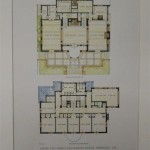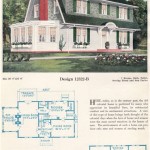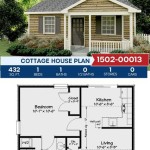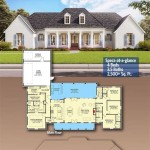Contemporary Inverted House Plans: Free Printable Resources and Design Considerations
Contemporary house designs are constantly evolving, pushing the boundaries of traditional architectural norms. Among these innovative designs, the inverted house plan presents a unique approach to space utilization, natural light optimization, and overall visual appeal. The inverted house, often characterized by living spaces on the upper level and bedrooms on the lower level, offers distinct advantages and requires careful planning. Accessibility to free printable resources for these designs can significantly aid in the initial planning stages. This article explores the key aspects of contemporary inverted house plans, focusing on the availability of free printable resources and the design considerations integral to their successful implementation.The concept of the inverted house plan challenges the conventional layout where living areas are typically located on the ground floor. By placing these spaces upstairs, architects aim to capitalize on better views, improved natural light penetration, and increased privacy. This design approach is particularly well-suited for sites with challenging topography, such as sloping hillsides or coastal locations, where maximizing views is a priority. Understanding the nuances of this design requires careful attention to detail, and readily available resources, specifically free printable plans, can serve as invaluable tools for homeowners and aspiring builders.
Benefits of Inverted House Plans
Inverted house plans offer a range of benefits that make them an appealing choice for modern living. One of the primary advantages is the enhanced view potential. By positioning the living spaces on the upper level, residents can enjoy panoramic vistas that might be obscured from a ground-floor location. This is especially significant for properties with scenic surroundings, such as ocean views, mountain ranges, or expansive landscapes.
Furthermore, inverted designs often allow for better natural light penetration into the primary living areas. Upper floors typically receive more direct sunlight than lower floors, which can contribute to a brighter and more inviting atmosphere within the home. This increased natural light can also reduce the need for artificial lighting, leading to energy savings. Moreover, natural light has been linked to improved mood and overall well-being.
Another benefit is the increased privacy afforded by placing bedrooms on the lower level. The separation of living and sleeping areas helps to create a more peaceful and restful environment in the bedrooms. This is particularly beneficial in urban settings or areas with high traffic levels, where noise pollution can be a concern. The lower level can also be designed to provide direct access to outdoor spaces, such as gardens or patios, creating a seamless connection between the interior and exterior.
Free Printable Resources: Navigating the Options
While comprehensive architectural plans typically require professional drafting, free printable resources can offer a starting point for understanding the fundamental principles of inverted house design. These resources often include basic floor plans, elevation drawings, and schematic diagrams that illustrate the layout and spatial relationships within the home. It is important to note that these free resources are primarily intended for informational and inspirational purposes and should not be used as a substitute for professionally engineered and permitted construction documents.
Several online platforms and architectural websites offer free printable house plans, including those featuring inverted designs. These plans often vary in style, size, and complexity, catering to a range of preferences. Some platforms provide editable PDFs, allowing users to customize the plans to some degree before printing. When utilizing these resources, it is crucial to carefully review the dimensions, layouts, and structural details to ensure they align with local building codes and personal requirements. It is also recommended to consult with a qualified architect or structural engineer before proceeding with any construction based on these free plans.
The quality of free printable resources can vary significantly. Some plans may be poorly drafted or lack essential information, while others may be more comprehensive and detailed. Look for plans that include clear dimensions, notations, and structural elements. Pay attention to the scale of the drawings and ensure that they are accurately represented. It is also advisable to cross-reference the plans with other sources of information to verify their accuracy and completeness.
Key Design Considerations for Inverted House Plans
Designing an inverted house plan requires careful consideration of several key factors, including accessibility, structural integrity, and energy efficiency. Accessibility is a paramount concern, especially for homeowners with mobility limitations or those planning for aging in place. The placement of the living areas on the upper level necessitates the inclusion of stairs or an elevator, which can pose challenges for some individuals. Careful planning is required to ensure that all areas of the house are easily accessible to all residents and visitors.
Structural integrity is another critical consideration. The upper level of an inverted house often has a larger footprint than the lower level, which can create significant structural challenges. The design must account for the increased load-bearing requirements and ensure that the foundation and supporting walls are adequately reinforced. Consulting with a structural engineer is essential to ensure that the design meets all applicable building codes and safety standards.
Energy efficiency is also an important factor to consider. The orientation of the house, the placement of windows, and the selection of building materials can all have a significant impact on energy consumption. Optimizing natural light and ventilation can help to reduce the need for artificial lighting and air conditioning. Employing energy-efficient building materials, such as insulated windows and high-performance insulation, can further improve the overall energy performance of the house. In addition, consider the placement of solar panels on the roof to generate renewable energy.
The design of the staircase in an inverted house is particularly important. The staircase serves as a primary connection between the living areas and the sleeping areas, and it should be both functional and aesthetically pleasing. The staircase should be designed to be comfortable and safe to use, with appropriate handrails and lighting. The staircase can also serve as a focal point within the house, adding architectural interest and visual appeal.
The design of the exterior of an inverted house should complement the surrounding environment and reflect the overall architectural style of the house. The choice of materials, colors, and landscaping can all contribute to the visual appeal of the house. Consider the use of sustainable and environmentally friendly materials to minimize the environmental impact of the construction. The landscaping should be designed to enhance the beauty of the house and to provide privacy and shade.
The interior design of an inverted house should be carefully coordinated to create a cohesive and harmonious living environment. The choice of furniture, colors, and lighting can all contribute to the overall atmosphere of the house. Consider the use of natural materials and textures to create a warm and inviting space. The interior design should also be functional and practical, meeting the needs of the residents. Careful planning and attention to detail are essential to create a successful inverted house design.
In addition to these key considerations, other factors may also influence the design of an inverted house plan. These factors may include the size and shape of the lot, the local climate, and the personal preferences of the homeowners. It is important to carefully consider all of these factors when planning an inverted house design to ensure that the final result is both functional and aesthetically pleasing.

Truoba 320 3 Bedroom Mid Century Modern House Plan

Luxury Two Story Modern Style Reverse Living House Plan 4270

Luxury Two Story Modern Style Reverse Living House Plan 4270

Modern Plan 3 083 Square Feet Bedrooms 5 Bathrooms 207 00084

Sloped Lot House Plans Walkout Basement Drummond

Truoba 320 3 Bedroom Mid Century Modern House Plan

Plan 43939 Modern Mountain House With Window Wall

Plan 81203 Modern House 3 Bedrooms Great Window Views

3 Story Luxury Contemporary Style House Plan 6025 The Mendoza

Contemporary Style House Plan 3 Beds 2 Baths 1131 Sq Ft 923 166








